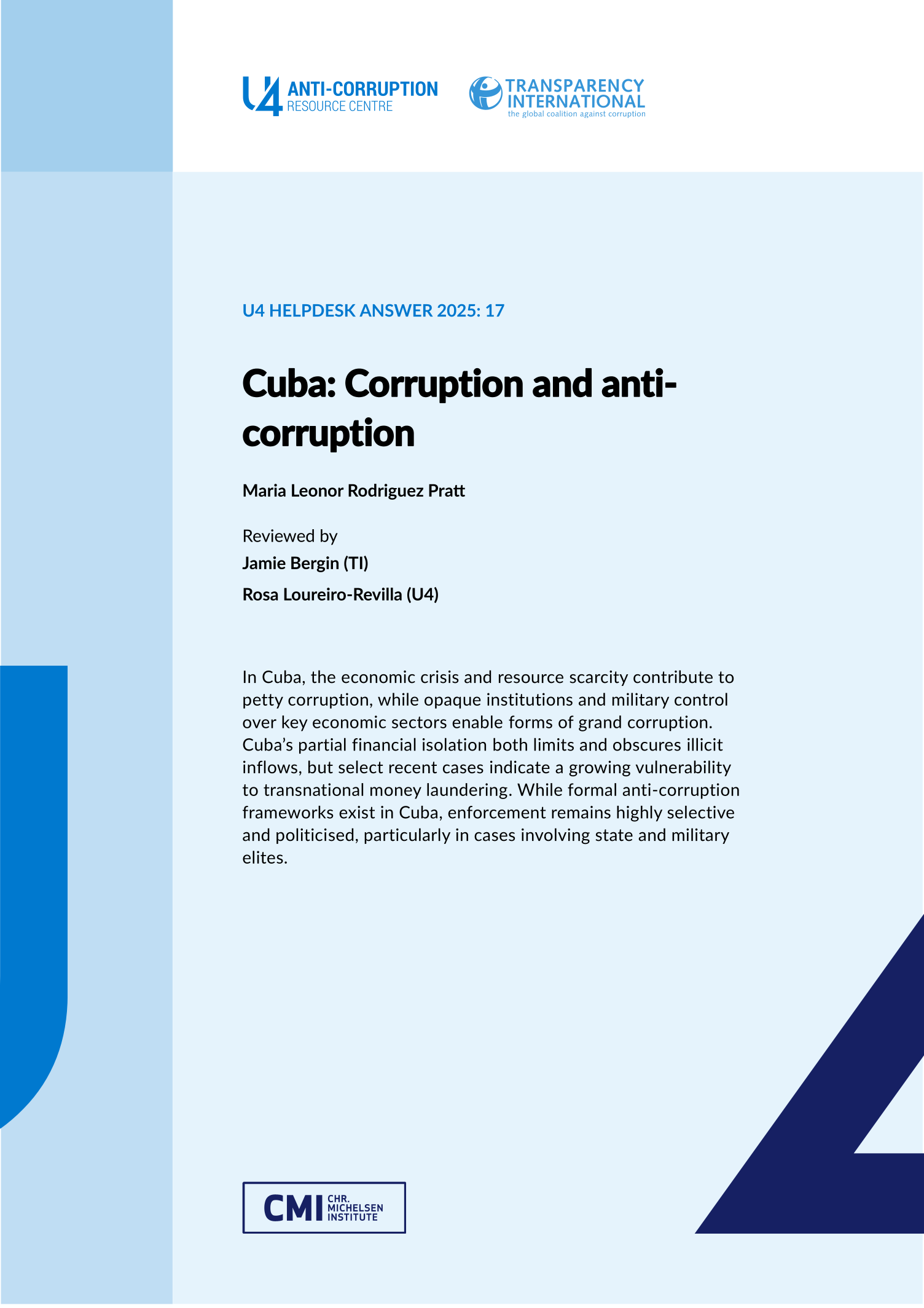Main points
- Cuba’s political and economic system is deeply centralised and controlled by the Communist Party and the military elite. The military linked conglomerate GAESA manages a significant portion of the national economy, including tourism, retail, remittances and logistics, operating without public oversight or institutional checks.
- In recent years, Cuba has undergone notable leadership changes. With the retirement of Raúl Castro and the rise of Miguel Díaz-Canel, followed by the 2019 appointment of Manuel Marrero Cruz as the country’s first prime minister in over four decades, the political structure has formally diversified. However, these changes have not significantly altered the centralisation of power.
- The new leadership has been outspoken about corruption, spearheaded anti-corruption drives across different sectors and even dismissed high-level officials accused of corruption. However, the government has also largely avoided disclosing exact details on the nature of accusations.
- In recent years, more stringent sanctions for corruption offences have also been introduced. However, Judicial independence in Cuba is compromised, and courts are subordinate to the national assembly and the Communist Party, and judicial appointments lack transparency. Prosecutions for corruption are limited and often politicised.
- Petty corruption is reportedly pronounced in sectors affected by chronic scarcity such as healthcare, education and fuel distribution.
- The expansion of the private sector – particularly through the legalisation and growth of private small and medium enterprises (MiPYMEs) – marks one of the most significant economic shifts in recent Cuban history. While this emerging sector offers new opportunities for economic activity, it also introduces new governance challenges, including the risk of clientelism, regulatory capture and unmonitored illicit financial flows.
- The management of remittances operates under opaque financial mechanisms. Foreign currency is funnelled into electronic accounts restricted to GAESA run stores, creating a closed-loop system.
- Recent cases involving Cuban nationals or ties to Cuban state-linked entities highlight the country’s growing exposure to transnational money laundering operations.


